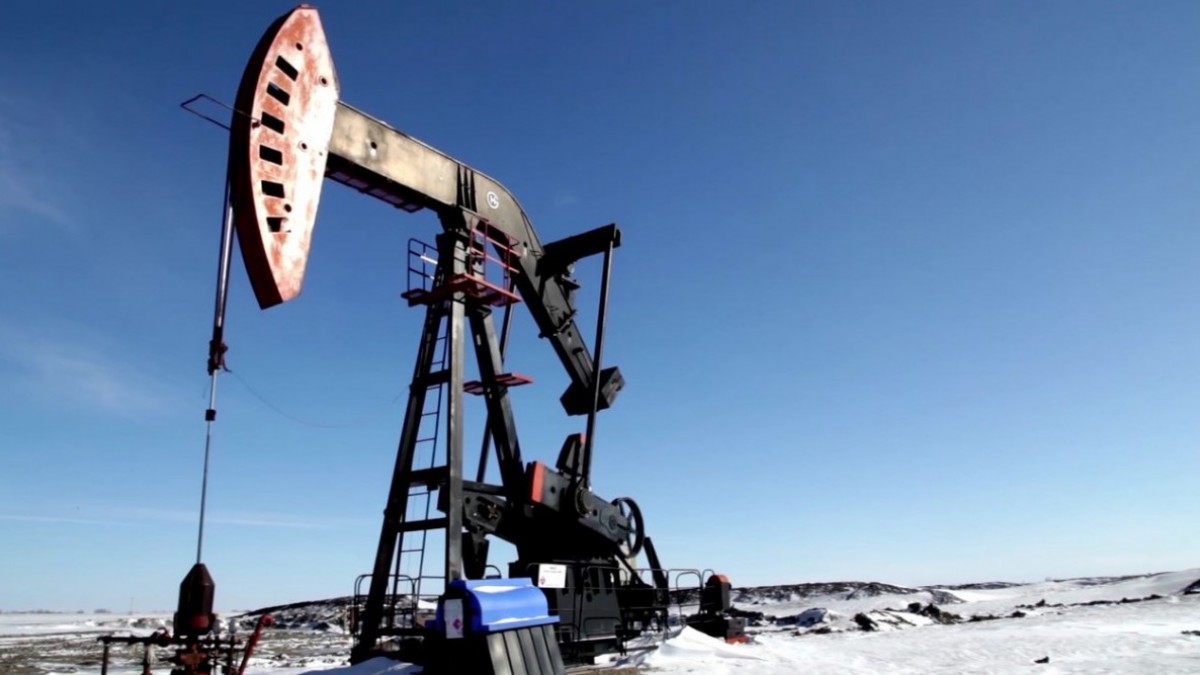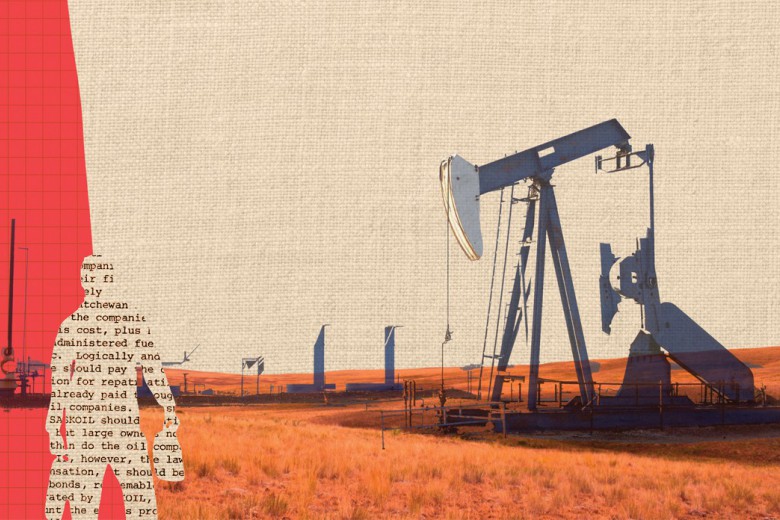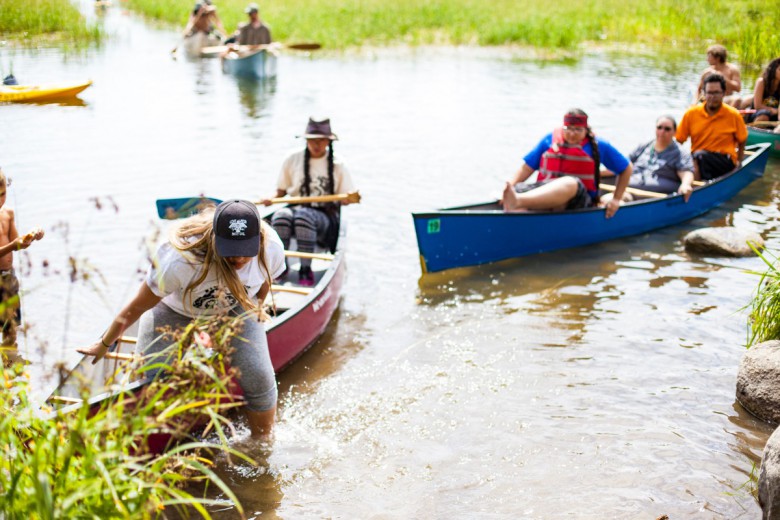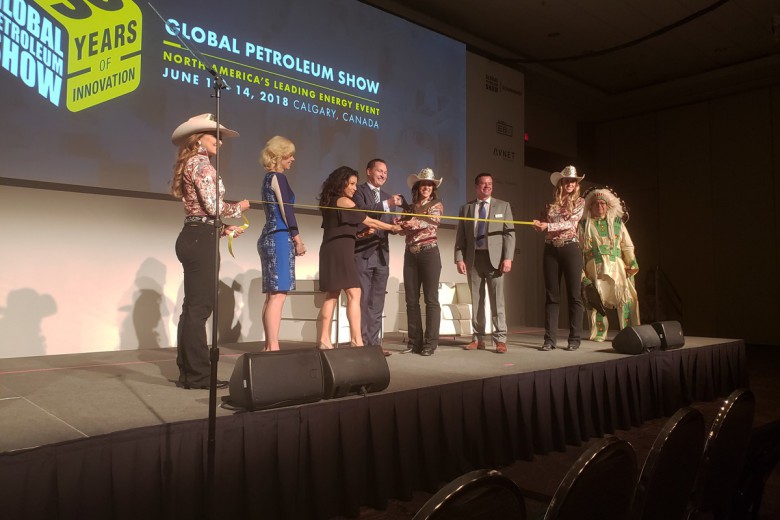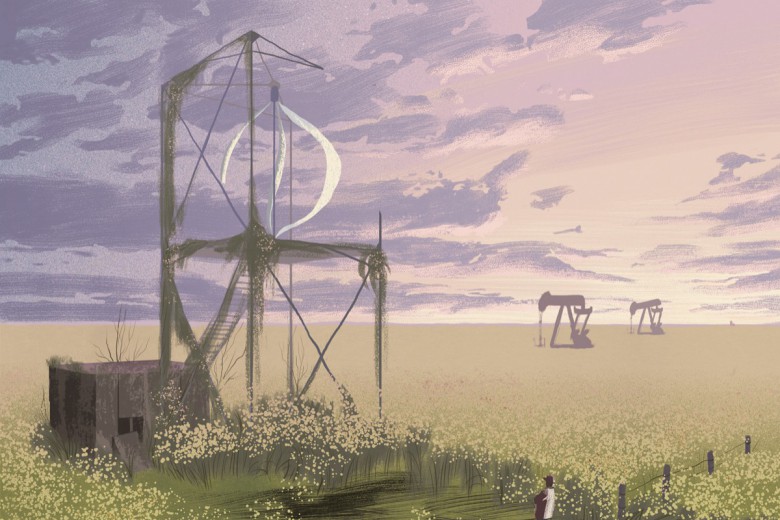A film like Crude Power: Oil, Money & Influence in Saskatchewan is unexpected in oil country.
“Oil is king,” the narrator announces in the opening scenes, “in a province where resistance is small.”
And so, in a place where the oil and gas industry is so prevalent, where everyone knows someone connected with the sector, it was perhaps no wonder the auditorium at the University of Regina was packed on October 4, 2017 for the first public screening of the film. Made by 13 students at the journalism school there, Crude Power promised an honest look at the industry.
The crowd was also drawn by the hype drummed up by the release of several articles on Saskatchewan’s oil industry earlier in the month in the Toronto Star and National Observer, as well as Global News television coverage. That was the culmination of a months-long collaborative investigation project between the media outlets and the four journalism schools of Regina, Concordia, Ryerson, and the University of British Columbia. Prior to this, news articles critical of the oil industry in Saskatchewan have been rare.
The 47-minute film tells four stories punctuated with a stream of startling facts, making for a clear portrayal of an industry recklessly putting people, lands, and waters in continual danger, aided by a provincial government seemingly uninterested in independently regulating the 460,000 barrel-per-day oil sector.
Organized by the themes of fire, air, water, and earth, the film’s opening story (also titled “Influence: By the Barrel”) introduces viewers to Saskatchewan’s boom-and-bust oil economy. Jeff Pierson, a hotel operator in Estevan (city motto: The Energy City), sums up the economic dependence of an entire town on the oil industry: “It goes from the wild west, to the great depression.” The segment also introduces the intimate relationship between government and industry. The CEO of Calgary-based Whitecap Resources, Grant Fagerheim, gives a sense of this intimacy: “We have continued dialogue with the Saskatchewan government, right to the premier, who answers his cell phone if you need to contact him.” Clips show Premier Brad Wall addressing crowds saying, “You actually have to support pipelines,” and “When I say ‘we,’ I mean this [oil and gas] sector.”
The first segment sets the context of an industry with major influence and gives reason to be troubled, but the second segment – “H2S Gas: Exposed” – is where the alarm bells really sound. Viewers are shown investigations into releases of hydrogen sulfide gas (H2S), which in low concentrations, smells like rotten eggs and at high concentrations of 1,000 parts per million or more can be fatal. The film reiterates findings, first brought to light by CBC investigative reporter Geoff Leo in 2015, that 43 wells randomly tested in 2015 had average H2S levels of 30,000 ppm, which is 30 times more than the concentration that could kill a person. (There are 126,000 wells in Saskatchewan).
Tragically, Michael Bunz, an industry worker who had received inadequate safety training and equipment, died in May 2014 from exposure to H2S at a facility in southeastern Saskatchewan.
Another worker suffered severe exposure to H2S in 2016 and recovered, but was unwilling to speak on record for the film about their experience. One person who did speak to cameras about H2S exposure did so with her face blurred out and voice distorted, fearing that if they showed their true identity they would face backlash from their community.
The major new finding regarding H2S is the extent of the efforts by both the Saskatchewan government and industry to hide the threats posed by industry to workers’ health and the health of the land, and to drag their feet on implementing policy and enforcing regulation to protect people, even after Michael Bunz’s preventable death.
The third story of the film centres on the 2016 Husky pipeline spill in the North Saskatchewan River, and its effects 400 km downstream to James Smith Cree Nation and beyond. Husky recovered some oil from the river – though the exact amount is a matter of debate – and Husky has not cleaned the riverbed of the toxic contamination that has settled there. The provincial government, for its part, has contravened its own rules by not publicly releasing Husky’s report on the spill. This revelation serves as one example of many showing how information about the industry’s effects is concealed in Saskatchewan. James Smith Cree Nation is suing Husky in order to access basic information and to possibly recoup damages to the riverbed they lay claim to.
The final section focuses largely on the saga of farmer Terry Crush, whose property is peppered with oil wells that have spilled many times, including 10 major saltwater spills.
In a moment of depressing comedy, Patricia Farnese, associate professor of law at the University of Saskatchewan, says, “Everybody is subject to regulation; everybody has to balance rights.” The film cuts to Crush saying, “You can’t really say ‘no’ to industry,” then back to Farnese: “It’s true that you can’t say no. We do want development in Saskatchewan for oil and gas, and so they do get to have access.” The exchange shows that, in effect, oil wins, regardless of the regulation song and dance. Everybody has to balance rights, but industry ultimately holds the balance of power.
Amid all the discussion of the oil industry and its dangers, the film oddly doesn’t overtly discuss climate change. Saskatchewan is one of the main oil and gas producing zones on the continent, and is the Canadian province with the highest per-capita greenhouse gas emissions. But not naming climate change may, in a way, make some viewers more willing to engage critically with the oil and gas industry. As University of Saskatchewan associate professor in geography Emily Eaton discusses in a new study with the Corporate Mapping Report, Climate Politics in the Patch: Engaging Saskatchewan’s Oil-Producing Communities on Climate Change Issues, people in oil-producing regions of Saskatchewan are “largely dismissive over concerns about climate change.” A film more explicitly about climate may have lost its chance to build bridges for necessary conversations in these communities.
Following the film, a panel discussion was held, comprised of Eaton, University of Regina journalism student and contributor to the film, Katie Doke-Sawatzky, James Smith Cree Nation’s Chief Wally Burns, and Petroleum Technology Research Centre communications director, Norm Sacuta. The discussion veered quickly toward what alternatives to an oil economy in Saskatchewan would look like, or if they were needed at all. The film effectively showed the dangers of the industry in Saskatchewan, and this opened up rare space for critical reflection. Given the opportunity, and with the existential threat that meaningful climate regulation would pose to the industry, attendees engaged in a broad, big-picture discussion.
If the film had a noticeable weakness, it was in its coverage of Indigenous land. The film did highlight the case of James Smith Cree Nation after the Husky spill, and discussed seismic testing on Thunderchild First Nation ceremonial grounds, but it did not discuss the implications of oil extraction – including surface and subsurface rights – on the treaties. A focus on the treaties would rightly bring into view the role of the oil industry, as it exists now, as an imposing colonial force dispossessing Indigenous peoples of their lands, and standing in the way of reconciliation.
Overall though, the film presents compelling evidence that something is very wrong in Saskatchewan, made worse by alarming complacency. The widely held belief that industry extracts resources and government acts to protect people is called deeply into question. By exposing troubling facts and giving a seldom-revealed picture of the pervasive influence the oil industry holds in the province, the film could – and should – spur people to organize against this formidable giant. While the analysis in the film isn’t particularly radical, breaking the silence around the pain caused by the oil industry in Saskatchewan is a radical act, and an inspiring, necessary and brave one.
Crude Power was made by:
Jennifer Ackerman
Madina Azizi
Janelle Blakley
Cory Coleman
Josh Diaz
Katie Doke Sawatzky
Brenna Engel
Jared Gottselig
Celine Grimard
Rebbeca Marroquin
Michaela Solomon
Kyrsten Stringer
Caitlin Taylor
Faculty Supervisors:
P.W. Elliott
Trevor Grant


